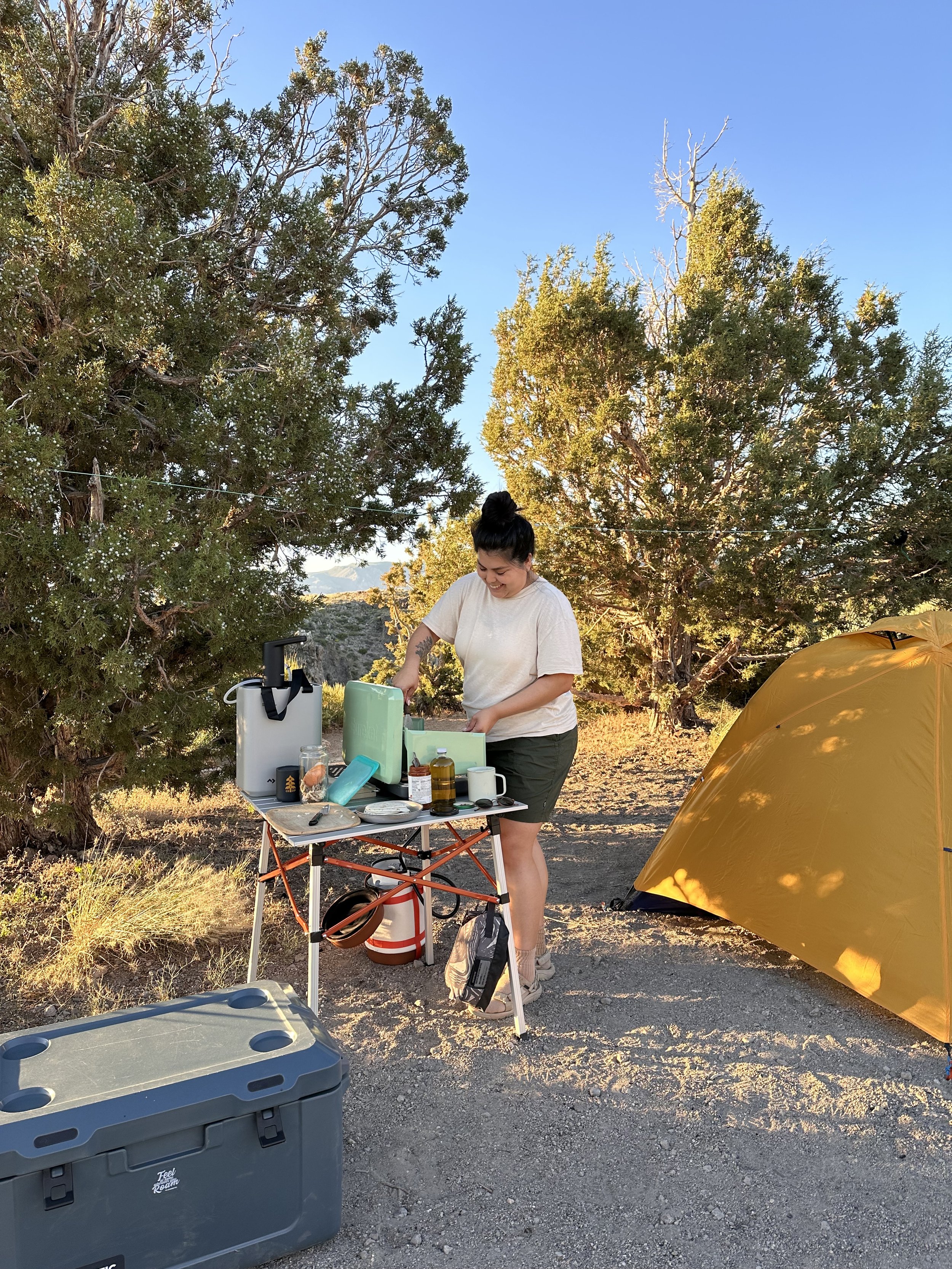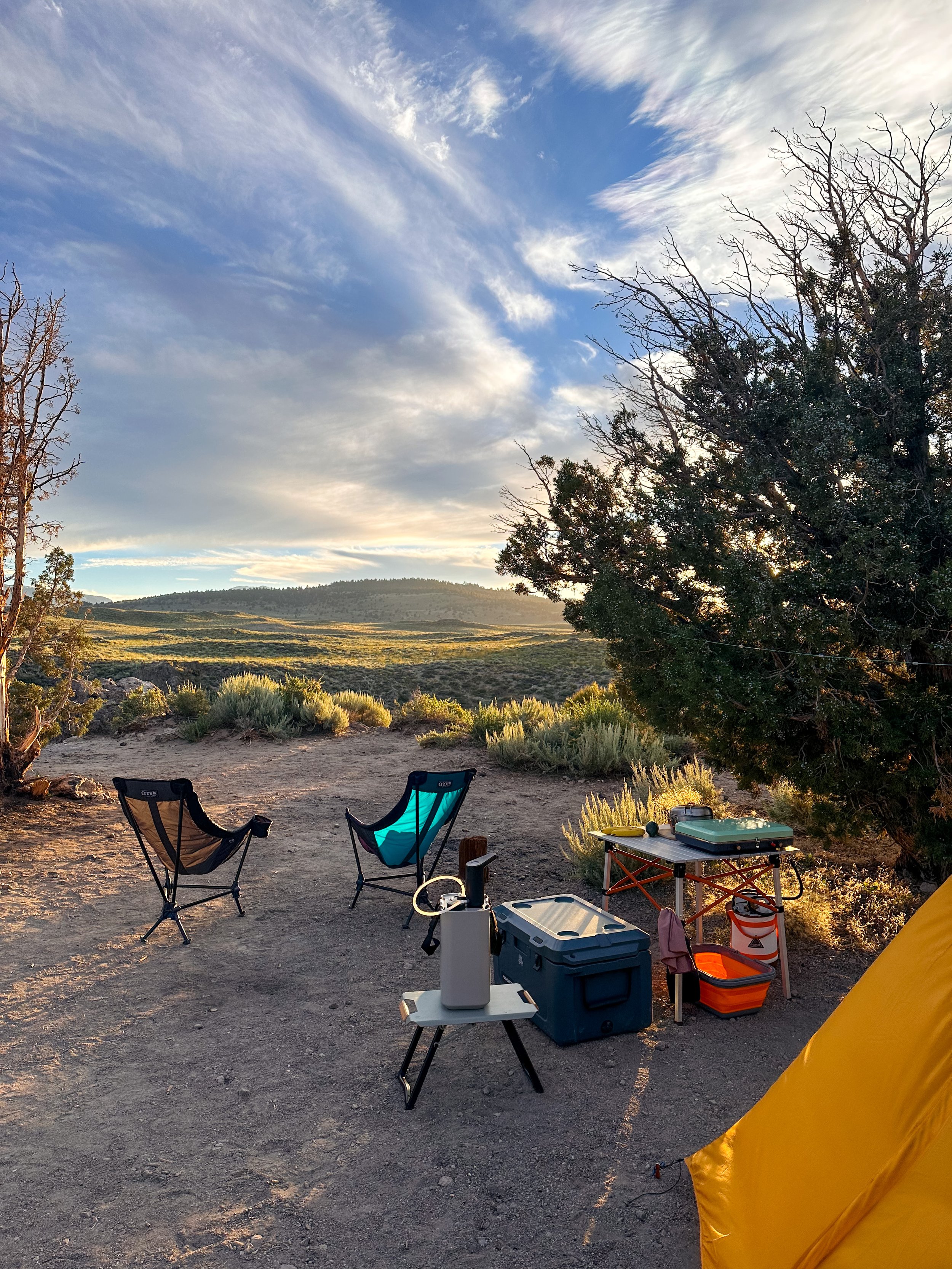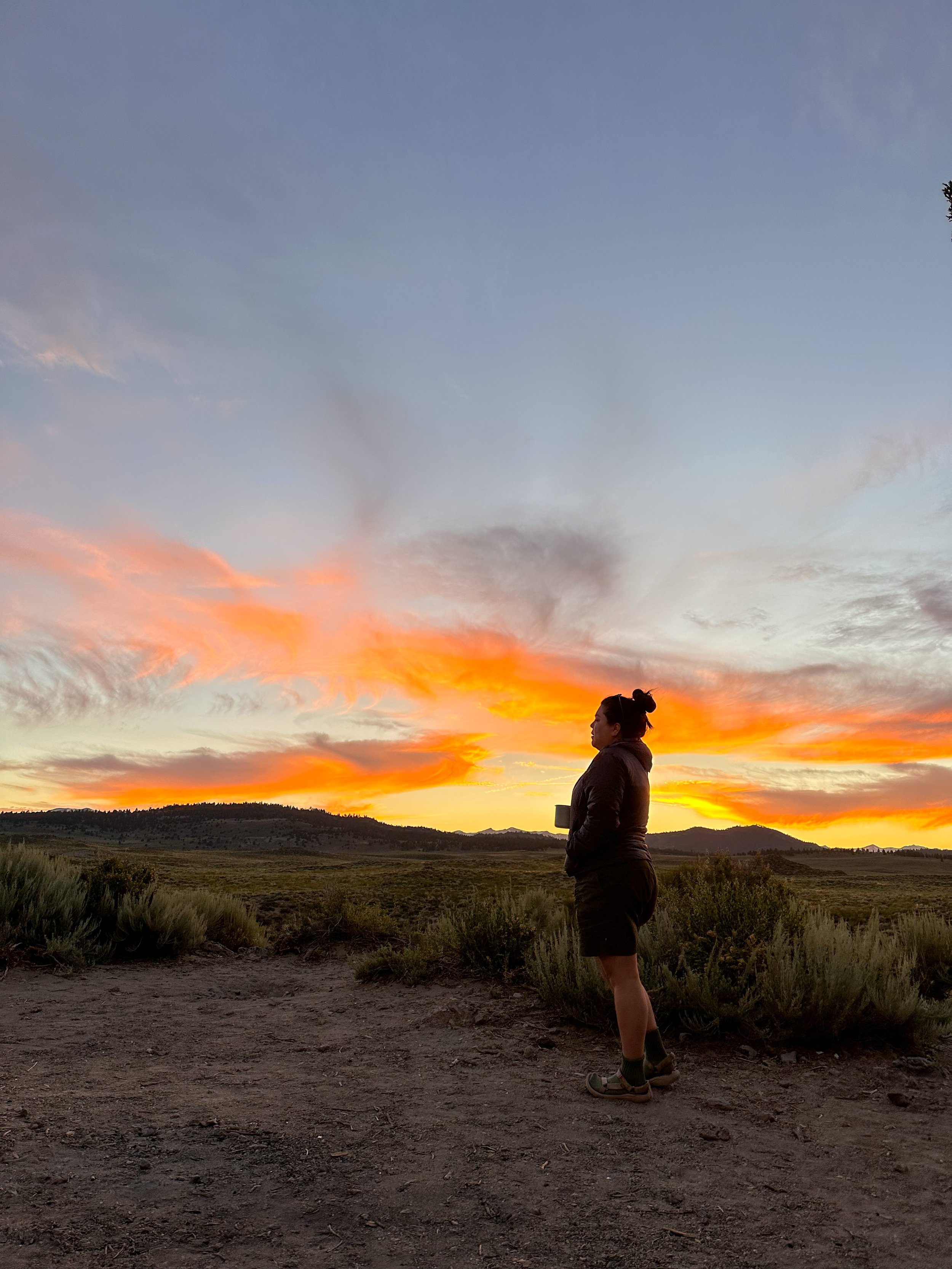What is Dispersed camping?
I thought I would write a post for folks who may not know what dispersed camping is or have heard of it but not quite sure what it is or how to prepare for it. I also think it’s important that if we do go dispersed camping to follow the Leave No Trace guidelines so that these places we visit and camp at are treated with respect- so that you and others can continue to enjoy it for years to come!
So what is dispersed camping? Dispersed camping is camping outside of a designated developed campground or recreation area, typically with little to no amenities & services like picnic tables, water, fire pits, bathrooms and trash removal. Reservations or paying for a site are not required and are typically in National Forest or BLM (Bureau of Land Management) Land.
Since there are no services or amenities, that means you have to plan ahead and go prepared. Also be prepared to pack out EVERYTHING you pack in. You may also have to double check if permits are needed, like a campfire permit here in California, for campfires and even camping stoves.
What to bring
Considering there are no amenities, here are the things I make sure to include in my packing list:
Table to cook/eat. Here are two tables I like: REI Co-op Camp Roll Table and Mountain Summit Gear Heavy-Duty Roll-Top Table
Chairs to eat and chill.
Water in refillable water containers (2 gallons per person, per day is recommended ).
Food
Cooking equipment: camp stove, pots, cooking utensils, reusable plates + eating utensils.
Camp sink (or bucket to wash dishes). I love this foldable sink and don't forget biodegradable soap!
Shelter - just a reminder to bring your tent (and sleep system), unless you’ll be sleeping in your car.
Lighting-headlamps, lantern or like these string lights I have been loving.
Bathroom kit/toilet! This is super important. I’ll expand more about bathroom etiqutte below. But you need to have the supplies to be able to pack out your human waste if needed, and your toilet paper. Here’s this cool kit, PACT Outdoors Outdoor Bathroom Kit.
Trash bag + Recycle bag + Compost container + gray water container- if possible bring a reusable trash bag + recycle bag, and compost container for food scraps if composting is accessible to you. Unless you are straining your dish water from food scraps and it’s not a lot of water, have a container to pack out your gray water.
Map/navigation - considering there may not be any service.
Some of these items are already part of my regular camping pack list, and may be a part of yours too! But I wanted to make this list because being prepared with some extra items will make your trip much more enjoyable and help with leaving no trace.
Choosing a site
Once you have arrived to your destination:
First you want to make sure you are driving on clearly marked dirt roads and not driving over plants.
Find an area with bare soil (where you can clearly tell it’s been used), a durable surface. Not over meadows or any plants, including grasses.
Make sure to camp at least 200ft away from water sources, whether it’s river, small stream, or lake.
One additional thing I would like to add, be considerate of other campers when picking a site. Folks typically camp in these type of spots to get some solitude away from other campers and crowds. So if you see a spot has been taken, find another spot. I say this because we had this happen to us, where a person showed up to the spot we had set up camp, almost at midnight and waking us up. I realized later that he had set up his tent maybe 10 feet away from ours, and I couldn’t fall asleep knowing some random person decided to set up really close to us.
Bathroom at camp
Regulations for going to the bathroom may differ in different places, but here are some general guidelines:
Going poop. When burying your human waste, you need to make sure it’s 200ft away (about 70 big steps) from water sources, camp and even trails. Then you dig a cat hole that’s 6-8 inch deep, 4-6 inches in diameter, do your business and cover well. There are shovels that have measurements on them so you don’t have to guess.
If regulations in the area state that you have to pack out your waste, you can use waste bags , which will contain the smell.
With pee, you don’t have to dig a cat hole, but still keep the 200ft away distance in mind.
Always pack out your toilet paper, even if it’s considered “biodegradable”. You can also use a reusable pee cloth (this is for pee, not poop).
You can always bring a portable toilet too, either way you will have to dispose of the waste properly afterwards.
With many more people going backpacking, dispersed camping and just visiting the outdoors in general, many of these places we visit have been contaminated due to human waste. So it’s important we follow these guidelines to prevent that from happening any further. Even in some places where burying waste was acceptable, simply too much waste was being produced and are not allowing it anymore.
Campfires
Regulations may allow for a campfire, but with the constant drought and heat waves we’ve been having due to the climate crisis, places might have a fire ban. Personally, I never bother making a fire, unless there’s a fire ring and I have enough water to put it out. Things to keep in mind:
If bringing/buying wood, make sure it’s local wood. To avoid the spread of disease and pests like the Goldspotted Oak Bore in California.
Depending on regulations, you may be able to collect firewood, that is dead wood on the ground.
Don’t leave a fire unattended.
Put out a fire COMPLETELY when done. First by drowning the campfire with water (be careful with your face, due to the hot steam) stirring, and more water. If you hover your hand over it and it still feels hot, repeat the process.
Whether you are camping in a tent, car, or van, it’s very important to take care of Mother Earth and to follow local guidelines to make sure we always have these places to recreate. Remember to double check those local guidelines and regulations before heading out. I hope these tips help you plan out your next camping trip!
Happy Camping!







